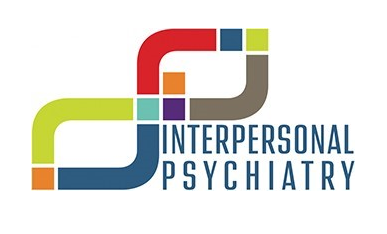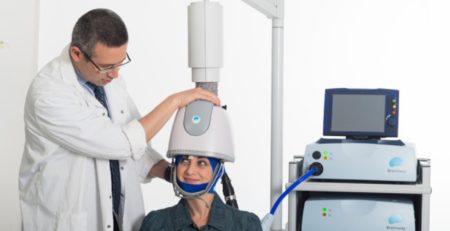Understanding Bipolar Disorder
Bipolar disorder is a mental health condition affecting millions of people worldwide. Extreme shifts in mood, energy levels, and thinking patterns characterize it. People with bipolar experience periods of mania and depression, which are very different from the regular ups and downs that most people experience. In this blog post, we will explore what bipolar disorder is, its symptoms and treatments, and how to support a loved one who is living with bipolar disorder.
What is Bipolar Disorder?
Bipolar disorder is a mental illness that causes extreme shifts in mood, energy, and the ability to think clearly. During manic episodes, people may feel unusually energetic or elated—a state often referred to as “high” or “manic”—while during depressive episodes, they may feel down or hopeless—a condition known as “low” or “depressed.” The severity of these shifts can vary significantly from person to person. While some may experience only mild changes in mood and behavior during their episodes, others may have more intense swings between mania and depression.
Symptoms & Treatments
The symptoms of bipolar disorder can be divided into two categories: manic signs and depressive symptoms. Manic symptoms include intense joy or irritability; decreased need for sleep; racing thoughts; chattering; engaging in risky behaviors; increased goal-oriented activity; grandiose thinking; increased creativity; difficulty concentrating; and feeling overly energized. Depressive symptoms include sadness or hopelessness; fatigue or low energy levels; difficulty concentrating; changes in appetite (eating too much or too little); sleeping too much or too little; social withdrawal; low self-esteem; guilt/shame/worthlessness feelings; suicidal thoughts/behaviors.
The most common treatment for bipolar disorder is medication prescribed by a psychiatrist and counseling sessions with a licensed therapist specializing in treating mental health conditions like bipolar disorder. In addition to medication and therapy, lifestyle changes such as getting regular exercise, eating healthy foods, avoiding drugs/alcohol use, getting adequate sleep each night (7-9 hours), and managing stress levels through relaxation techniques like yoga or meditation can also help manage the symptoms of bipolar disorder.
Bipolar disorder is a disabling and chronic mental illness. Symptoms of the condition can range in severity but are typically characterized by alternating periods of mania, hypomania, and depression. While some people with bipolar disorder may sometimes experience long periods without symptoms, others may cycle through manic and depressive episodes regularly. Additionally, those who experience severe attacks may suffer from accompanying psychotic symptoms such as delusions or hallucinations, which can lead to a misdiagnosis of schizophrenia. Therefore, it is essential to seek professional medical advice if you or your loved one experiences a sudden change in mood and behavior.

Mania can significantly impact someone’s life and is an important symptom to consider in the diagnosis of bipolar disorder. Mania often begins suddenly, causing people with the condition to experience wildly fluctuating moods, disturbed sleep patterns, and extreme energy levels. People with hypomania may feel less impaired as it is a milder form of mania that does not include psychotic episodes; however, some individuals continue to struggle with social interactions or work due to their distinct manic behavior. Furthermore, the frequency of mania and hypomania episodes varies among those with bipolar disorder; some experience several occurrences throughout their life, while others only suffer a few. Therefore, understanding the signs of mania is crucial to diagnose bipolar disorder properly.
Mania is a dangerous symptom of bipolar that can lead to severe consequences. Despite being initially appealing due to providing an escape from depression, mania often progresses quickly and unpredictably beyond the point at which it is easily managed. In fact, during these periods, individuals may become increasingly hostile and agitated, react impulsively without thinking things through properly, and make decisions that would otherwise seem ridiculous or irresponsible if times were calmer. Unfortunately, if those suffering from bipolar do not receive help early on, these episodes of mania can quickly spiral out of control.
For many people with bipolar disorder, a manic episode can be a frightening and life-threatening experience. During these episodes, individuals often display erratic behavior with dangerous consequences, such as suicidal thoughts and actions. Therefore, it is essential for people experiencing bipolar disorder to learn what red flags may signal manic behavior before the episode further escalates. By recognizing early warning signs of mania, those living with bipolar disorder may be able to initiate supportive strategies to manage their symptoms and mitigate any potential harm. It’s also paramount that family, friends, and caretakers become familiar with the symptoms of mania so they may act quickly and appropriately when an individual appears to be struggling. With proper education and awareness of the risks associated with manic episodes, those with bipolar disorder will have more control over their lives.
Bipolar depression can be challenging to manage, as it is marked by extreme highs and lows that can swiftly shift. For many people, the depths of bipolar depression can make it nearly impossible to leave their beds. Insomnia and too much sleep are common occurrences; in either case, a few hours of restorative sleep often elude those dealing with a depressive episode. Making even the most minor decisions can become insurmountable, adding an extra layer of complexity to everyday life. Other signs of bipolar depression include profound feelings of loss, guilt, failure, and obsessive thoughts about suicide. Although there is no one-size-fits-all solution for managing depression, there are treatments that may help control symptoms and find relief from this challenging condition.
For a diagnosis of depression to be made, most symptoms must be present nearly every day for at least two weeks. The depressive symptoms can be physical, psychological, or behavioral and may include thoughts of suicide or a loss of interest in activities once enjoyed. But when depression is associated with bipolar disorder, treatment becomes more complex as traditional medications may not work. In this case, an individualized treatment plan is essential to ensure symptom relief is achieved while managing the risk of mood swings. With expert advice and support, it’s possible to lead a healthy, balanced life.
Causes
Scientists have not yet discovered a single cause of bipolar Disorder. Currently, they believe several factors may contribute, including:
Genetics plays a significant role when it comes to bipolar Disorder. Research indicates that the chances of developing the same condition as one’s parents or siblings are higher. However, this does not always guarantee that a child from a family with a history of bipolar disorder will develop it themselves. Studies of identical twins have also confirmed this – often, if one twin has the Disorder, the other won’t. The influence of genetics shouldn’t be overlooked, but it is not an absolute determinant.
Stress can significantly contribute to the development or worsening of psychiatric illnesses. Subtle stressors, such as difficulties in an interpersonal relationship, can cause considerable upheaval that leads to psychological destabilization. Severe stress, like the death of a loved one, serious illness, job loss, or filing for bankruptcy, can often bring about overwhelming feelings coupled with intense periods of fear. It can be challenging to process and stay afloat; However, by learning healthy coping strategies, people can manage their feelings more effectively, which may reduce the chance of their distress leading to a full-blown mental health condition.
Brain structure and function: Despite being unable to diagnose bipolar Disorder using brain scans, scientists have identified mild differences in the typical size and activity of specific brain structures among individuals affected by this condition. The brain structures that had altered structure or function included the hippocampus, amygdala, basal ganglia, and prefrontal cortex. Although the structural variations between affected and unaffected individuals were relatively minor, their impact on how our brains work may be significant. A better understanding of these tiny but profoundly influential alterations could help to improve diagnoses and treatment for those with bipolar Disorder.
Diagnosis
Diagnosing bipolar Disorder can be tricky, as no clear-cut physiological markers can quickly diagnose the condition. To help pinpoint a diagnosis, doctors conduct comprehensive physical examinations and interviews with their patients to determine any signs or symptoms of bipolar Disorder. Additionally, lab tests may be ordered to rule out other potential illnesses causing similar symptoms of bipolar Disorder, such as hyperthyroidism. Suppose no other causes can be found from these physical tests. In that case, a mental health care provider may likely need to get involved in the assessment process for definitive employment of the Diagnosis.
Diagnosing bipolar Disorder can be tricky, and getting the proper diagnosis is essential. To diagnose bipolar Disorder, medical health professionals look at factors such as whether the person has experienced an episode of mania or hypomania and how impaired they are during their most severe attacks. Mental health care professionals commonly use the Diagnostic and Statistical Manual of Mental Disorders (DSM) to determine the type of bipolar disorder a person may have based on these factors. It is essential for people to properly understand what kind of bipolar Disorder they are living with to ensure effective treatment and management.
Four Types Of Bipolar Disorder
Bipolar I Disorder is a potentially serious mental health condition that affects people’s moods, energy levels, and behavior. Those who struggle with this Disorder often experience extreme highs and lows, from manic episodes that last at least seven days to depressive states shrouded in sadness and confusion. Diagnosis of bipolar I involve critical evaluation of the intensity of the manic episodes; for instance, if these episodes are so severe that court-ordered hospitalization is necessary, then Diagnosis may be prescribed. Everyone struggles differently with the condition and can manifest symptoms of bipolar I disorder in unpredictable ways, making it all the more important for concerned individuals to reach out for help and treatment at the first indication of symptoms.
Bipolar II Disorder is a mental health condition characterized by extreme shifts in one’s mood, energy, and behavior. People with the disorder experience episodes of depression, which regularly alternate with episodes of hypomania – less extreme than the manic episodes associated with Bipolar I. This cycle can cause difficulty with work, relationships, and other aspects of life. It is important to note that while bipolar disorders are considered lifelong mental health conditions, they are treatable. With suitable therapies and medications, those affected by Bipolar II Disorder can lead fulfilling and successful lives.
Cyclothymic Disorder, or cyclothymia, is a mood disorder that affects many people. It is characterized by rapidly changing low and high moods over two years. These soft and high periods can be minor compared to those experienced with similar disorders, such as bipolar Disorder. However, they persist — accompanied by periods of normal moods that typically last less than eight weeks. Although the emotional shifts are not life-threatening or dangerous, they can be challenging to manage. They may interfere with a person’s ability to maintain relationships and participate successfully in social activities. Treatment is available for cyclothymia, including medication and therapeutic approaches like cognitive-behavioral therapy, which helps a person understand their feelings better and develop the skills necessary for managing them.
Bipolar Disorder, classified as “other specified” or “unspecified,” is a mental health condition affecting millions worldwide. While this type of bipolar Disorder does not meet the criteria for bipolar I, II, or cyclothymia, it can still be problematic and impact a person’s quality of life. The symptoms of this type of bipolar Disorder may include experiencing periods of abnormally elevated moods and bouts of depression. People with this condition should know that there are treatments available that can help manage the symptoms and improve their emotional well-being. It is essential for those affected to speak to a healthcare professional about possible Diagnoses and ways to handle their condition.
Living with Bipolar Disorder can be challenging, but it doesn’t have to be overwhelming! With proper medical care and support from loved ones, it is possible to manage the condition successfully. If you know someone diagnosed with Bipolar Disorder, it is essential to provide them with understanding and compassion while encouraging them to stick to their treatment plan. You can make a huge difference in their life by being there for them!











